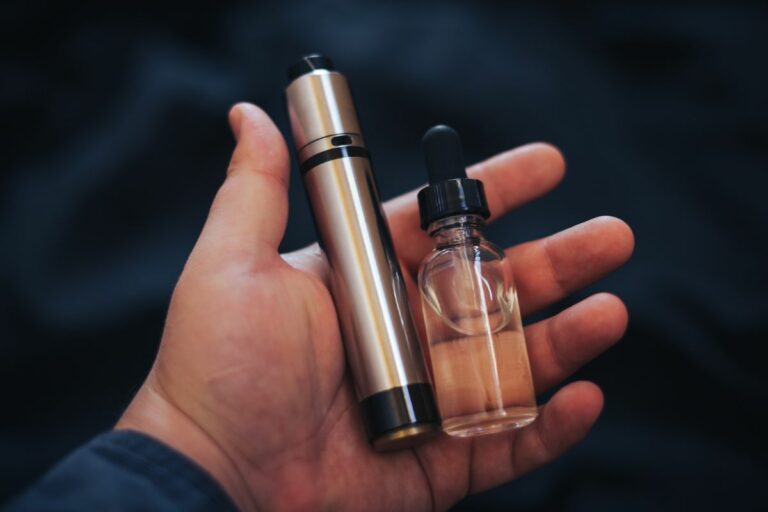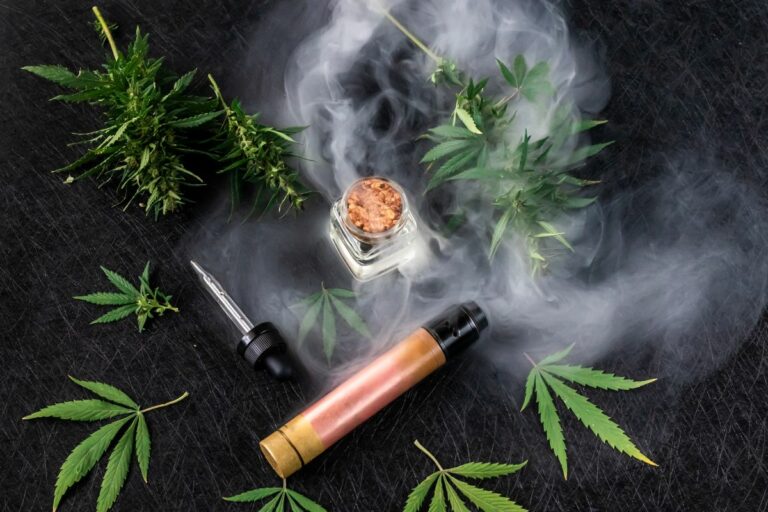Edibles vs Smoking Cost: An Objective Comparative Analysis
The consumption of cannabis has been gaining popularity around the world, with many users exploring different methods to enjoy its effects. Two such methods, smoking and ingesting edibles, have been the center of debate as to which might be more cost-effective. In order to find out which method is better in terms of cost, it is important to understand the various factors that play a role in determining the cost and benefits of each.
Edibles encompass a wide variety of products made by infusing cannabis into food or beverages, while smoking typically involves the inhalation of burned cannabis flowers or concentrates. Each method has distinct differences in terms of taste, smell, onset of effects, and overall experience. Furthermore, there are varying health impacts associated with each, not to mention the varying potency of products and the importance of careful dosing. By analyzing the costs associated with each method, we can better understand which one might suit a cannabis user’s needs the best.
Table of Contents
Key Takeaways
- Edibles and smoking have distinct differences in taste, smell, and overall experience.
- Each method has unique health impacts and requires attention to potency and dosing.
- Analyzing cost is essential for determining the preferred method of cannabis consumption.
Understanding Edibles
Edibles are a popular alternative to smoking cannabis, offering users a different way to consume the plant’s active compounds like THC. Available in various forms, including gummies, candies, baked goods, and more, cannabis-infused products provide a discreet and smoke-free option for consumption.
One key difference between edibles and smoking is the onset of effects. When consumed in edible form, THC and other cannabinoids must go through the digestive system, leading to a slower onset of effects. Typically, it takes anywhere from 30 minutes to 2 hours for the effects of edibles to be felt, whereas smoking provides an almost immediate effect due to the direct inhalation of cannabinoids into the lungs.
Another distinction is the duration of effects. Edibles tend to have longer-lasting effects compared to smoking, often lasting anywhere from 4 to 6 hours, or even longer in some cases. This can be advantageous for those seeking a more extended period of relief from symptoms, but may also increase the likelihood of over-consuming. To avoid potential issues, it is crucial to start with a low dose and wait for the full effects to be felt before consuming more.
NEW CUSTOMER DISCOUNT
Save 15%
15% OFF YOUR ENTIRE ORDER FOR NEW CUSTOMERS USE CODE WELCOME15!
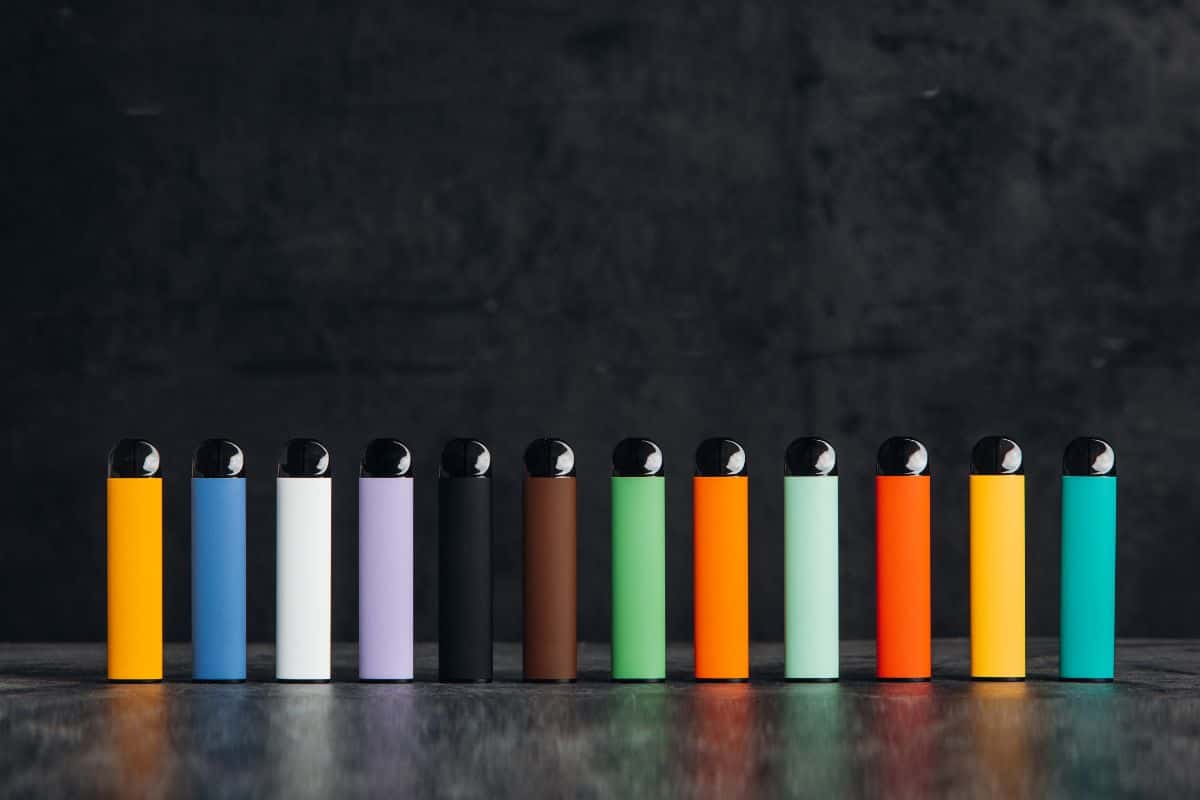
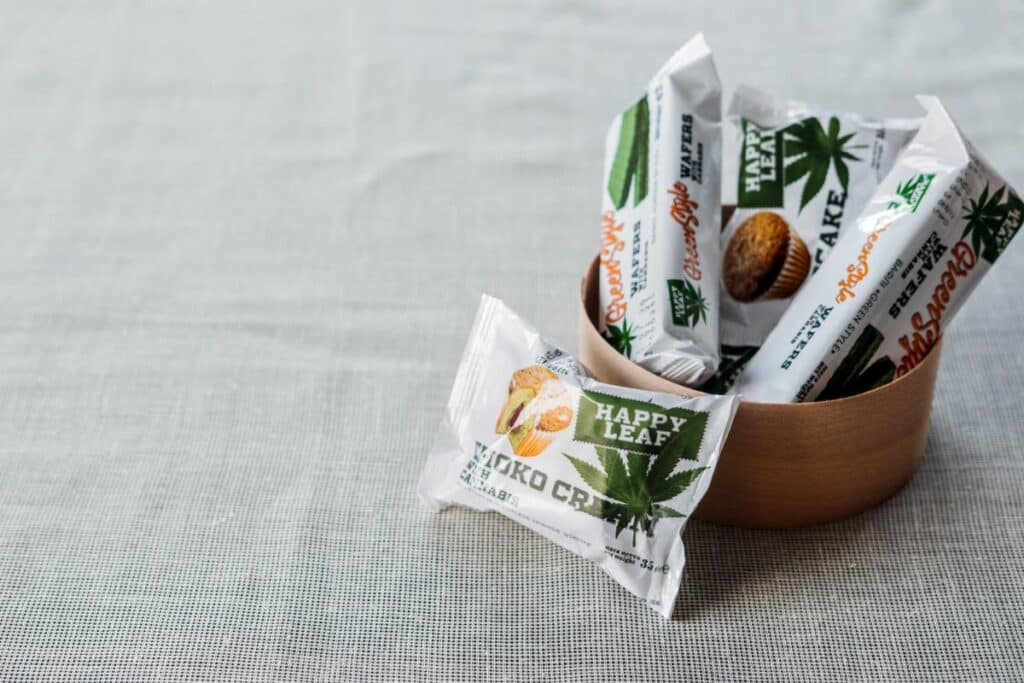
The intensity of effects can also vary between edibles and smoking. Since edibles are absorbed through the digestive system, they often result in a more potent and longer-lasting high due to the liver converting THC into a more potent form. This can lead to a stronger and sometimes different experience compared to smoking, making it essential for users to be aware of proper dosing and response times.
When considering the cost of edibles versus smoking, there are various factors to take into account. Edibles typically have a higher price tag than raw cannabis flower, mainly due to the additional costs of producing, packaging, and distributing cannabis-infused products. However, the more extended duration of effects may result in a more cost-effective option for those seeking long-lasting relief.
In conclusion, edibles offer a unique method of cannabis consumption with varying effects compared to smoking. Their discreet nature, longer-lasting effects, and potency make them an attractive option for many users, though it’s essential to be aware of proper dosing and safety considerations.
Understanding Smoking
When it comes to consuming marijuana, smoking is the most traditional method. It involves inhaling the smoke produced by burning the dried flower or bud of the cannabis plant. This process releases the cannabinoids, the active compounds in the plant, which are then absorbed into the bloodstream through the lungs.
There are several ways to smoke marijuana, with joints being one of the most well-known methods. A joint is created by rolling the ground cannabis flower in a rolling paper, which can be made from materials like hemp, rice, or wood pulp.
Another popular method of smoking marijuana is using a bong. A bong is a water pipe designed to cool and filter the smoke as it passes through the water before being inhaled by the user. This can result in a smoother and less harsh experience compared to smoking a joint.

Smoking marijuana has its pros and cons. One of the key advantages is the rapid onset of effects. As cannabinoids are absorbed directly by the lungs, users can feel the effects of marijuana within minutes. This immediate feedback is beneficial for those seeking quick relief from symptoms such as pain or anxiety.
On the other hand, smoking marijuana can have detrimental effects on pulmonary health. The combustion process produces tar and other harmful byproducts, which can irritate the respiratory system and potentially lead to long-term lung damage. Moreover, the cost of smoking marijuana can add up over time, as users may need to purchase rolling papers, lighters, and other accessories in addition to the cannabis flower itself.
In terms of cost, smoking marijuana can be more affordable compared to edibles, especially for those who prefer consuming smaller amounts. The price of cannabis flower is typically lower than that of processed edibles, and users have better control over the dosage and frequency of their consumption.
Ultimately, smoking offers a fast-acting option for marijuana consumption, with some drawbacks in terms of respiratory health and long-term costs. Understanding the process and the various methods of smoking can help users make informed choices that best suit their individual preferences and needs.
Taste and Smell Comparison
When comparing the taste and smell of edibles versus smoking, there are distinct differences that can affect user preferences.
Smoking cannabis flower allows for a more direct experience of the plant’s natural terpenes, which are responsible for the unique flavors and aromas found in various strains. Terpenes are volatile compounds that contribute to the overall sensory experience of using cannabis. When smoking, users can often taste and smell the distinct flavors and scents associated with each strain. For instance, a strain high in the terpene limonene may exhibit a citrusy aroma, while a strain containing pinene could have a pine-like scent.
Edibles, on the other hand, often incorporate cannabis extracts or infusions into food and beverage products with greater flavor varieties, sometimes masking or enhancing the taste of cannabis. While some edibles retain the distinct taste of cannabis through their use of full-spectrum extracts, others focus on incorporating specific terpenes or flavorings to create a more enjoyable or unique taste experience. Additionally, the method of consumption allows for a more gradual release of flavors, which can alter the perceived taste of the product.
The quality of the taste and smell in both methods largely depends on the ingredients used and the skill in which they are prepared. For example, high-quality cannabis flower with a rich profile of terpenes is more likely to provide a pleasurable smoking experience, while a well-made edible can enhance the overall taste and potency of a product.
Ultimately, the choice between edibles and smoking comes down to personal preference and desired effects. Some users may enjoy the authentic taste and smell of smoking cannabis flowers, while others may prefer the versatility and creativity found in edibles.
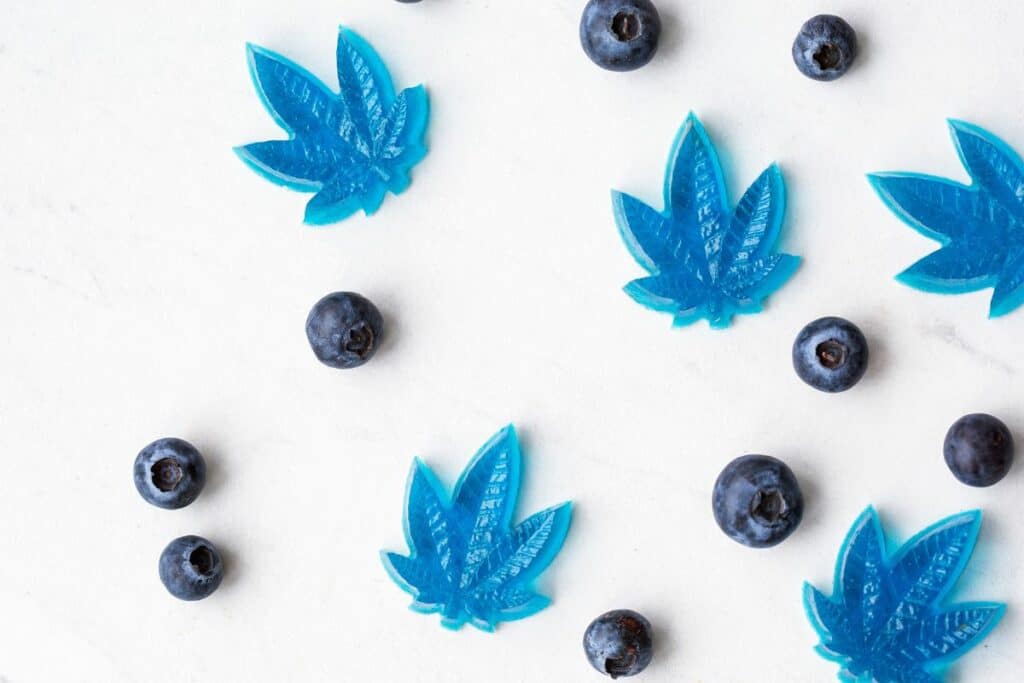
Experiencing the Effects
When comparing the experience of consuming cannabis through edibles and smoking, there are several factors to consider, including the onset of effects, duration, and intensity of the high.
- Onset of Effects: The onset of effects differs significantly between smoking and consuming edibles. Smoking cannabis results in a rapid onset of effects, typically within minutes of inhalation1. In contrast, edibles have a delayed onset, with effects taking anywhere between 30 minutes to 2 hours after ingestion2.
- Duration: The duration of effects also varies between the two methods of consumption. The high experienced through smoking cannabis usually lasts for about 2 hours3; however, the effects of edibles can last significantly longer — up to 6 to 8 hours, depending on individual factors such as metabolism and tolerance4.
- Intensity: The intensity of the high can be quite different between the two methods. When cannabis is smoked, the primary psychoactive compound, THC, is quickly absorbed into the bloodstream and travels to the brain5. Conversely, when cannabis is ingested in the form of an edible, the THC is metabolized differently, turning into 11-hydroxy-THC, which is more potent and can result in a stronger, more intense high6.
To summarize, the experience of consuming cannabis via smoking and edibles is notably distinct due to differences in onset, duration, and intensity of effects. While smoking offers a quicker onset and shorter duration, edibles provide a longer-lasting and potentially more intense experience.
Health Impact
The health impact of edibles and smoking cannabis varies, but there are notable differences for users to consider when choosing their method of consumption.
Edibles offer a smoke-free alternative to consuming cannabis, which can have positive effects on lung health. Smoking cannabis is associated with respiratory problems and can negatively impact lung function over time. Additionally, edibles may present a healthier option compared to smoking cannabis, as they do not involve the same risks associated with inhaling combusted plant material1.
On the other hand, edibles can have a more potent and longer-lasting effect due to the way they are metabolized by the liver. This may lead to a heightened risk of overconsumption, especially for those who are inexperienced or have a low tolerance for cannabis. Furthermore, cannabis metabolites may interact with the liver and potentially strain its function2. When consuming edibles, it’s important to carefully monitor intake and dosage to avoid the potential for negative health consequences.
While the immune system is not directly impacted by either method, it should be noted that smoking cannabis can result in exposure to various toxins and inflammation that may adversely impact overall health or harm the respiratory system. On the other hand, edibles may reduce exposure to toxins, but as they can be more potent due to the liver’s processing, they may still carry some health risks when consumed in high doses3.
In conclusion, both edibles and smoking cannabis carry different health risks, with edibles generally being considered a healthier option due to the lack of direct harm to the lungs. However, it is essential for users to understand their own tolerance and monitor their consumption, regardless of the method chosen.
Methods of Consumption
Cannabis users have a variety of consumption methods to choose from, depending on their preferences and desired effects. Two popular methods are smoking and consuming edibles. Both methods have their benefits and drawbacks, and each provides a unique experience to the user.
| Smoking is the traditional method of cannabis consumption. It involves inhaling the smoke produced by burning the cannabis flower. This allows the active compounds in the plant, such as THC and CBD, to be quickly absorbed into the bloodstream and provide immediate effects. Some benefits of smoking cannabis include rapid onset of effects and ease of dose control. However, smoking has its downsides, such as potential lung irritation and a strong smell. |
| Edibles are another popular consumption method, particularly among those who prefer not to smoke. They are cannabis-infused food products, such as brownies, gummies, and chocolates. Edibles offer a discreet way to consume cannabis, without the telltale smell of smoking. They also provide longer-lasting effects compared to smoking, due to the THC and CBD being absorbed in the digestive system. However, edibles can be more potent than smoking, as the liver metabolizes the THC, leading to a stronger experience. This can make it challenging to control the dosage, as the effects can take anywhere from 30 minutes to 2 hours to become noticeable. |
While choosing a consumption method ultimately comes down to individual preferences, it’s important for consumers to consider the benefits and drawbacks of each method. Smoking provides quick effects and better dose control, whereas edibles offer a discreet option with longer-lasting effects. Ultimately, it’s crucial to understand one’s tolerance and desired effects when choosing between smoking and consuming edibles.
Product Potency and Dosage
When comparing edibles and smoking cannabis, one significant factor to consider is the potency and dosage of each consumption method. Smoking cannabis involves inhaling the plant’s natural compounds, while edibles require a more complex breakdown in the body, leading to different experiences regarding potency and dosage.
In general, edibles are known for their longer-lasting and more intense effects compared to smoking cannabis, due to THC(CBD) being metabolized by the liver. This process creates an additional compound called 11-hydroxy-THC, which is more potent and has a longer-lasting effect than THC absorbed through the lungs.
Dosage becomes a crucial consideration when consuming edibles. For example, a typical dose in an edible might contain anywhere from 5 to 20 milligrams of THC, depending on factors such as users' tolerance and the desired intensity of effects. For novice users, it is advisable to start with low amounts of THC, such as 2.5 to 5 milligrams, and wait for at least 90 minutes before re-dosing.
Smoking cannabis, in contrast, allows for more immediate onset of effects and easier dosing control due to the rapid absorption of THC and CBD through the lungs. Inhaled cannabis also results in quicker peak concentration within the bloodstream, typically in less than 30 minutes. This enables users to control and titrate their intake more efficiently than with edibles.
Another consideration is the availability and popularity of high-potency cannabis concentrates, which are used for vaping and dabbing. These products contain significantly higher concentrations of THC and CBD than traditional cannabis flower. As such, they offer a more potent and cost-effective solution for users seeking stronger cannabis experiences or requiring higher doses for therapeutic reasons.
In conclusion, the differences in potency and dosing between edibles, smoking, and concentrates require careful attention, especially for those new to cannabis or using it for therapeutic purposes. It is essential to start with low doses and increase gradually, being mindful of the unique effects and timelines associated with each consumption method.
Cost Analysis
When comparing the costs of edibles versus smoking, several factors come into play. These include the price of the products themselves, the necessary equipment, taxes, and pricing differences between dispensaries.
Firstly, edibles tend to have a higher upfront cost compared to smoking products. For example, average pricing for edible products is around $15.39, while the cost of smoking products can be lower. However, the costs may vary depending on the specific product, potency, and quantity.
In terms of equipment, smoking requires the purchase of a lighter, pipe, or other smoking accessories, while edibles do not require any additional tools. The cost of these smoking accessories can vary depending on the quality and type, adding to the overall cost of smoking.
Another factor to consider when comparing costs is the pricing differences between dispensaries. Dispensaries may offer varying prices for similar products due to factors like location, product availability, and taxes. Some dispensaries may offer better deals on edibles, while others might provide more competitive pricing on smoking products.
Taxes play a role in the final cost of both edibles and smoking products. Different states and countries have different tax rates when it comes to cannabis products, which can affect the overall cost to consumers. Some jurisdictions may have higher taxes on edibles compared to smoking products, or vice versa.
Finally, it’s essential to consider cost-effectiveness when comparing edibles and smoking. Edibles typically have a longer-lasting effect than smoking, which can make them a more cost-effective choice for some users. On the other hand, the quicker onset of effects from smoking may be more desirable by some, making it a more cost-effective choice for them.
In conclusion, the cost analysis of edibles versus smoking depends on several factors, including product pricing, equipment, taxes, and individual preferences. Consumers should research and compare dispensaries, products, and tax regulations in their area to make an informed decision that best suits their needs and budget.
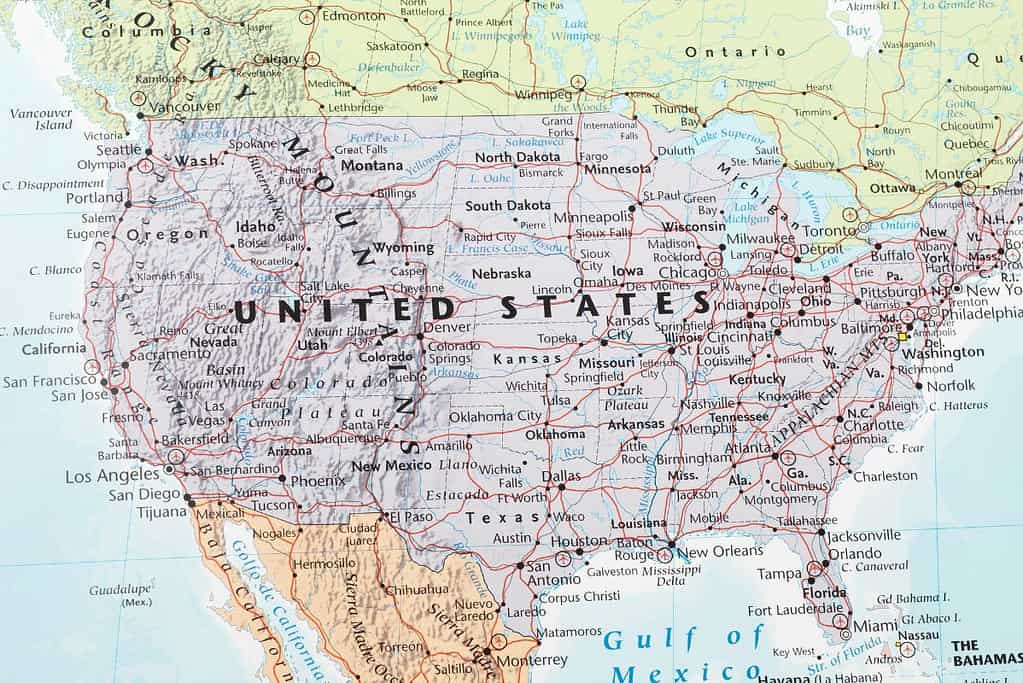
Relevance in Different States
In the United States, the legality of cannabis varies greatly, with a number of states having legalized it for medical and recreational use. As such, the trends and preferences of cannabis consumption vary across these states.
For instance, in Colorado, a state where cannabis is legal for recreational use, there has been a substantial increase in the consumption of cannabis-infused edibles. This might be attributed to the fact that edibles allow for discreet and smoke-free consumption, making them more appealing to users who don’t want to smoke or produce the distinct smell associated with cannabis.
On the other hand, cannabis users in states with stricter regulations might resort to more traditional methods of smoking, such as joints, bongs, or pipes. This could be due to the limited availability of edibles in these states, as products are less likely to be accessible through legal channels. Consequently, users are more likely to rely on smoking.
Considering cost factors, it is often found that the price of edibles and smoking products can vary significantly between states and even between dispensaries within the same state. In states where cannabis is legal, edibles might be priced slightly higher than smoking products due to the additional processing and packaging required. However, the overall costs for the consumers can be influenced by factors such as the potency of the product, taxes, and the quantity purchased.
From a public health perspective, it’s essential to acknowledge the varying landscapes in states where cannabis is legal and ensure the proper regulation and education initiatives are in place. This is especially important when it comes to consumption methods, as different methods may involve different risks, including duration and intensity of effects, interactions with other substances, and short-term or long-term health consequences.
It’s important for states to continuously evaluate the cost-effective balance between smoking and edible products, while also considering the availability, accessibility, and preferences of the consumers within their jurisdiction. Ultimately, the relevance of edibles versus smoking in different states will be shaped by the legal status, market dynamics, and consumer preferences, emphasizing the need for adequate policies and regulations to accommodate these variables.
Takeaway
When comparing edibles and smoking in terms of cost, it’s essential to consider the specifics of each method. The effectiveness and preference of each option greatly varies depending on individual tastes, budgets, and preferences.
For those seeking a more discreet and controlled experience, edibles offer a significant advantage. With precise dosing, edibles allow users to consume the desired amount of cannabinoids, such as THC or CBD, with very little odor. In contrast, smoking is typically less discreet, and its dosage control is less accurate.
Vaping offers a middle ground between edibles and smoking, as it’s both less odorous and more controlled than traditional smoking methods. However, the initial cost of a quality vaporizer can be higher than purchasing smoking supplies.
Another factor to consider is the longevity of each product. Edibles have a longer lasting effect, making them more cost-efficient for those seeking sustained relief. Smoking or vaping, on the other hand, provides immediate effects but may require repeated use to maintain optimal benefits.
In terms of specific products, rosin is a popular choice for those seeking a solventless concentrate. The rosin extraction process is straightforward and can be cost-efficient, especially when creating small batches from CBD flower or other cannabis plant materials.
Ultimately, the choice between edibles and smoking depends on personal preferences and individual budgets. Consumers must weigh the various factors such as discretion, product longevity, dosage control, and initial investment in equipment before deciding what works best for them.
Browse popular vape collections:
- Nicotine Disposables
- 2000 Puff Nicotine Disposable Vapes
- 2500 Puff Nicotine Disposable Vapes
- 5000 Puff Nicotine Disposable Vapes
- 6000 Puff Disposable Nicotine Vapes
- 7000 Puff Nicotine Disposable Vapes
- Disposable Vape Deals
- Best Vape Brands
- 8000 Puff Nicotine Disposable Vapes
- 9000 Puff Nicotine Disposable Vapes
- 5% Nicotine Disposable Vapes
- Rechargeable Nicotine Disposable Vapes
- Vape Coils
- Dab Wax Pens
- Dab Wax Pen Battery
- Yocan Vapes
- Vape Cases
Frequently Asked Questions
Do edibles provide better value than smoking?
Edibles and smoking can provide different experiences, so the value depends on your personal preferences. Edibles tend to provide a longer-lasting effect compared to smoking, but they also take longer to reach their peak 1. However, consuming too much in edible form can lead to an overwhelming experience. It is crucial to start with a low dose and adjust accordingly.
How do the health effects of edibles compare to smoking?
Edibles are generally considered healthier than smoking since there is no inhalation of smoke or toxins 2. Smoking cannabis can have similar respiratory effects as smoking tobacco, including lung irritation and coughing. On the other hand, edibles eliminate these issues but may still carry some risks related to overconsumption and delayed onset.
Are edibles or smoking more cost effective?
The cost-effectiveness of edibles and smoking varies based on consumption habits and individual preferences. For some, edibles may be more cost effective due to their longer-lasting effects and smaller amount needed to achieve the desired results. However, those who prefer instant effects may find smoking to be more cost effective, as the experience tends to be shorter and requires less cannabis.
How can the cost of homemade edibles be determined?
To determine the cost of homemade edibles, you must take into account the cost of cannabis, other ingredients, and the time spent preparing them. These expenses will vary depending on the type, quality, and quantity of cannabis used, as well as the other ingredients and recipe complexity. Remember that dosage and potency are key factors when making homemade edibles, so be cautious and start with a low dose.
What is the typical price range for commercial edibles?
Commercial edibles vary in price based on brand, potency, and location. Prices can range from $10 to $50 or more for a package, depending on the quality and amount of cannabis infused into the product 3. Keep in mind that laws and regulations surrounding edibles and their packaging vary by location, so make sure to research your local requirements and understand your desired dosage.
How does the cost efficiency of vaping compare to edibles?
Vaping can be a more cost-effective alternative to both edibles and smoking, as vaporizing cannabis allows for a quicker onset of effects and requires less cannabis for desired results 4. Additionally, vaping produces milder respiratory discomfort compared to smoking, but does require an initial investment in a vaporizer. As with smoking and edibles, the cost efficiency of vaping will depend on personal preferences and consumption habits.
Footnotes
- https://www.ncbi.nlm.nih.gov/pmc/articles/PMC5312634/ ↩ ↩2 ↩3
- https://www.ncbi.nlm.nih.gov/pmc/articles/PMC5260817/ ↩ ↩2 ↩3
- https://www.sciencedirect.com/science/article/pii/S2214799319300141 ↩ ↩2 ↩3
- https://www.ncbi.nlm.nih.gov/pmc/articles/PMC5260817/ ↩ ↩2
- https://www.sciencedirect.com/science/article/pii/S0091743517302384 ↩
- https://www.ncbi.nlm.nih.gov/pmc/articles/PMC5260817/ ↩


